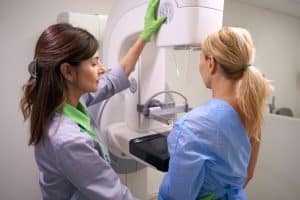A bone density scan, sometimes called a DEXA scan, measures the amount of calcium and other minerals in your bones using low-dose x-rays. The evaluation reveals the density and toughness of your bones (known as bone density or mass).
As individuals age, their bones often get thinner. This thinning of bones beyond normal is referred to as Osteopenia. You are more susceptible to osteoporosis, a more severe disease, if you have Osteopenia. Osteoporosis is a condition that progressively weakens and fractures bones. Osteoporosis often affects elderly individuals and is more prevalent in women over 65. Osteoporosis patients are more likely to experience fractures (broken bones), particularly in the hips, spine, and wrists.
How do DEXA Scans Operate?
The mineral content of certain bones, such as the hip, spine, and wrist, is measured using DEXA scans. This is how it operates:
- You will be asked to lie down on a specific DEXA x-ray table.
- The technician will assist you in finding the ideal posture and retaining it using positioning aids like foam blocks.
- The DEXA machine employs two distinct x-ray beams as the arm moves across the body. The beams utilize very little radiation to make the test safer and assist in identifying bone from other tissues.
- The scanner converts the data from the bone density test into images and graphs. The data would appear on the technologist’s computer screen, where fat and muscular tissue appear as shadows in the background while the bone is most easily visible in white.
- A radiologist or other medical professional with DEXA interpretation training reviews and interprets these findings.
- A copy of the written report is delivered to your healthcare practitioner so they can consult with you and decide on the best action.
Who Needs a DEXA Scan?
When determining who could benefit from a DEXA scan and how frequently, healthcare professionals consider several criteria. Healthcare providers frequently advise a DEXA scan to check your bone health for osteoporosis and fracture risk if you are older than 50, have fractured bones, or have other problems that put your bone health in danger.
Women begin to lose bone mass earlier and more quickly than males. Therefore, healthcare professionals often advise women to obtain a DEXA scan to check for osteoporosis at an earlier age than males.
If you have one or more risk factors for osteoporosis or fractures, your doctor could advise a DEXA scan:
- Increased age: As people age, they tend to lose bone mass. Starting at 65 (for women) and 70 (for males), the National Osteoporosis Foundation advises those at average risk to obtain a DEXA scan (men).
- Family history: You may be more susceptible to bone loss if one or more family members have osteoporosis or have sustained many fractures.
- Previously sustained fractures: Breaking a bone, particularly after age 50, may indicate that your risk is higher. Bones that are porous (less dense) are more brittle.
- Medical Conditions: Some medications, such as prednisone, cancer treatments, and drugs used after organ transplantation, can harm your bones because they alter bone metabolism and cause bone loss.
- Your general well-being: Your risk of breaking a bone might increase if you have several chronic medical conditions, as it reduces the muscle force on bones. Rheumatoid arthritis, lupus, diabetes, liver illness, and renal disease are risky disorders.
What other Purposes do Medical Professionals Utilize DEXA Scans for?
Medical professionals may also request a DEXA scan to:
- Follow alterations in bone health throughout time
- Keep an eye on how you’re responding to treatments, such as osteoporosis drugs
- Analyze your body’s composition, including how much muscle and fat you have
How Frequently Should DEXA Scans be Performed?
It is advised to have a DEXA scan once every two years, as Medicare allows. If you have specific illnesses, there are certain exceptions to this rule.
Age, fracture risk level, past DEXA scan, and current medicines are just a few variables your healthcare professional will consider. Then, your healthcare professional will create a unique strategy for evaluating and safeguarding your bone health.
Results
Using a bone density scan, you may compare your bone density to that of a healthy adult of the same age, gender, and ethnicity or a young adult with similar bone density.
A Standard Deviation (SD) score is produced to represent the difference. It calculates the discrepancy between your bone density and what is predicted.
- T score refers to the variation between your measurement and that of a young, healthy adult,
- A Z score is a variance between your measurement and that of a person your age.
The World Health Organization assigns the following categories to T scores:
- Above -1 SD, everything is normal.
- Mildly decreased bone mineral density (BMD) relative to peak bone mass is defined as between -1 and -2.5 SD (PBM)
- Osteoporosis is recognized at or below -2.5 SD.
If your Z score is less than -2, your bone density is lower than it should be for someone your age. Children and individuals under 30 who are still developing are often the target audience for Z scores.
The findings of a bone density scan may not always indicate whether you will experience a fracture, even though BMD readings are an excellent indicator of bone strength.
For instance, an individual with low bone density may never break a bone, but an individual with medium bone density may experience multiple fractures. This is because other characteristics, such as age, sex, or whether you’ve ever fallen, can affect your likelihood of sustaining a fracture. Before deciding whether or not you need treatment, your doctor will consider your risk factors.
How can one be Ready for the DEXA Scan?
Before a DEXA scan, most people don’t need to alter their regular schedule. Unless your healthcare practitioner instructs you differently, consume food, liquids, and prescriptions as usual. You will be asked to complete a questionnaire about your current health, any bone fractures in your family tree, your history of smoking, and your current medications.
The following needs to be done before appearing for the test:
- 24 hours before your test, stop taking calcium supplements. This includes antacids like TUMS® as well as multivitamins (commonly used to treat heartburn).
- Wear non-metal, loose-fitting clothing: Put on relaxed clothing. Choose goods without metal as much as possible (zippers, buttons, or buckles). A comfortable blouse and sweatpants would be appropriate.
- If you think you may be pregnant, tell your doctor: Low radiation levels are used in DEXA scans. Medical professionals advise avoiding radiation exposure throughout pregnancy to safeguard the growing fetus.
Conclusion
DEXA scans are the “gold standard” for determining osteoporosis and fracture risk. As people age, their bone density decreases significantly. Valence Medical Imaging is an OHIP service provider founded by a chief radiologist who oversees our network of neighborhood offices. We get that people are uneasy about having diagnostic imaging. We make every effort to ensure that the procedure is quick and effective so you can continue your day.



